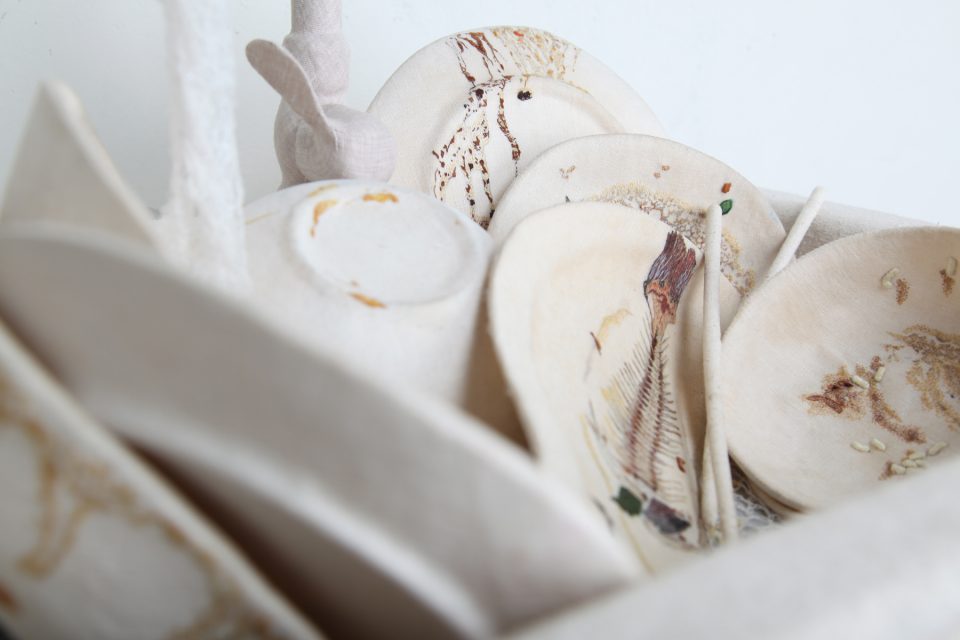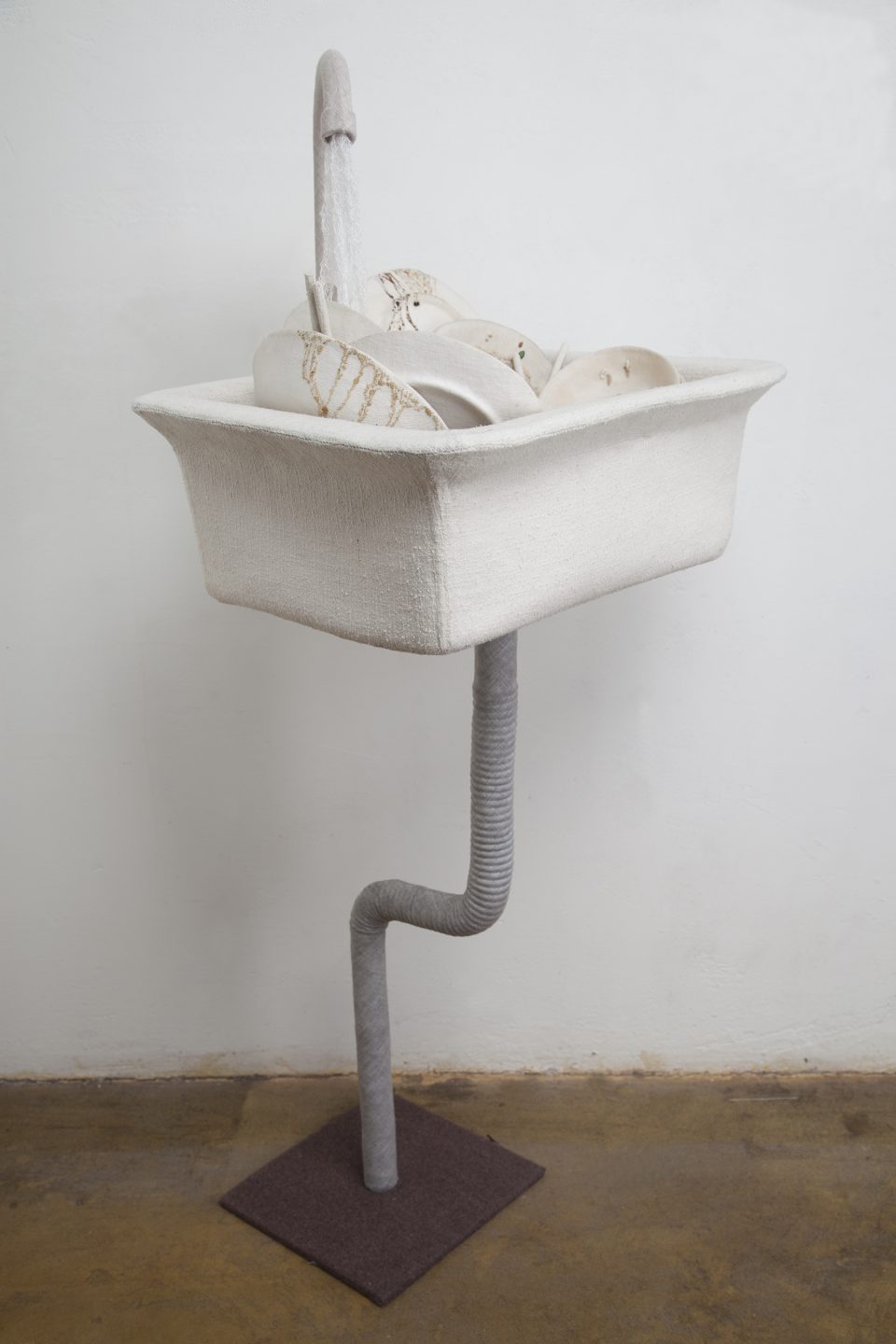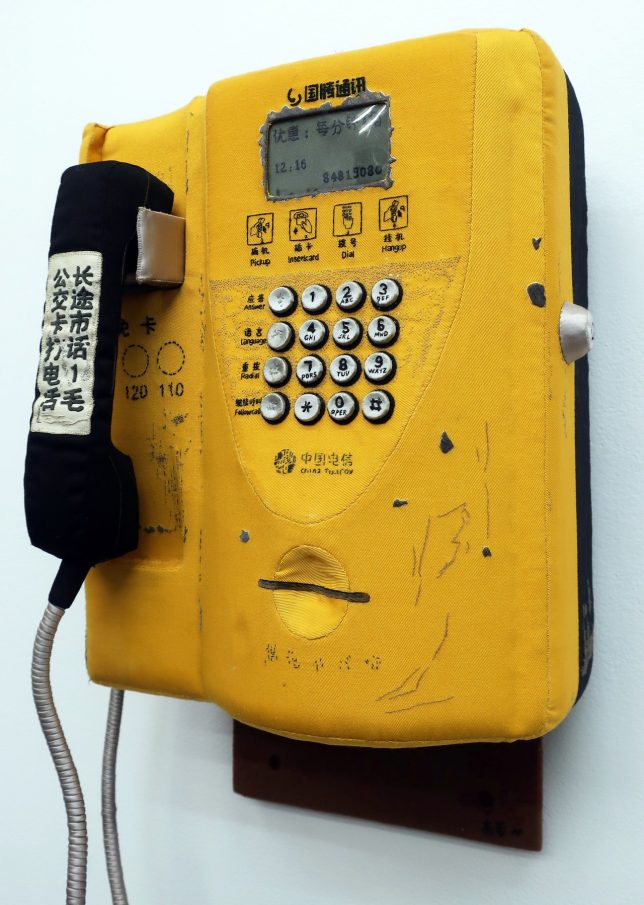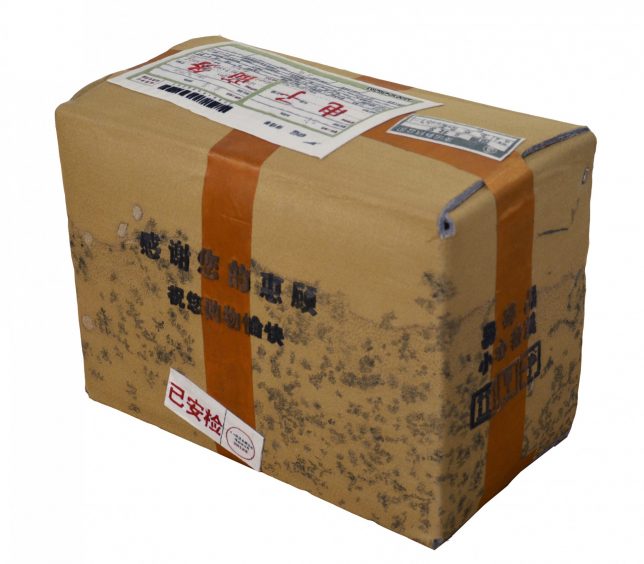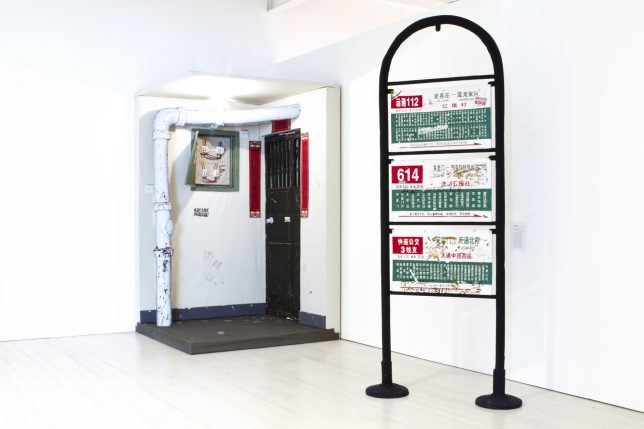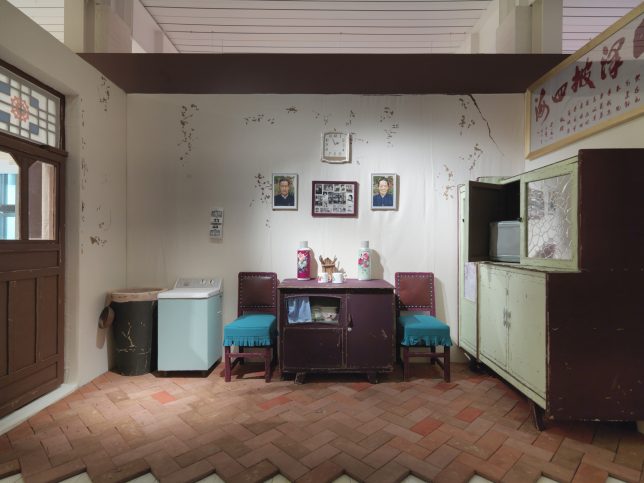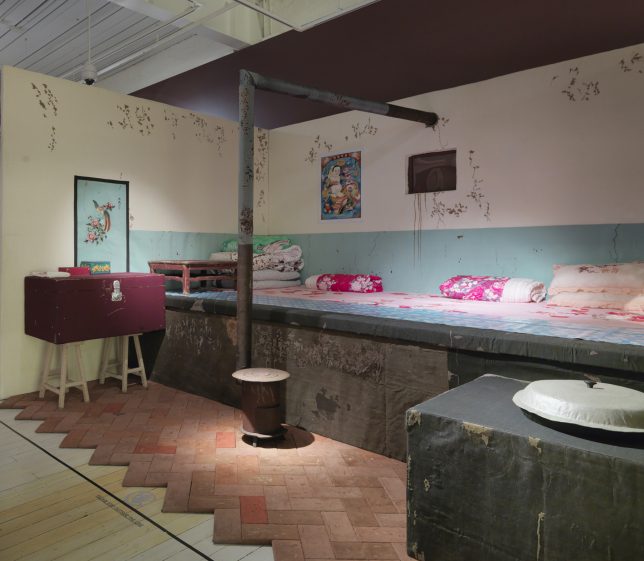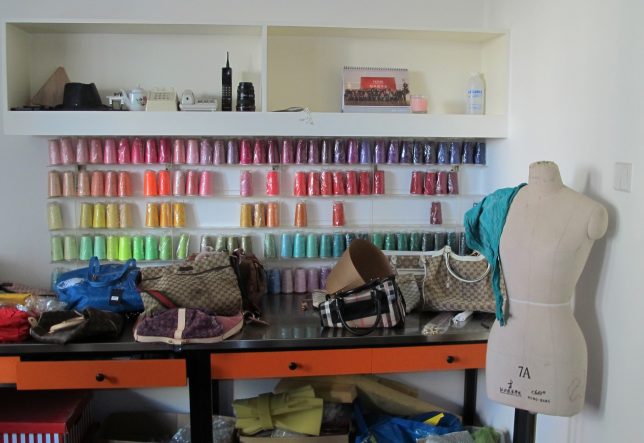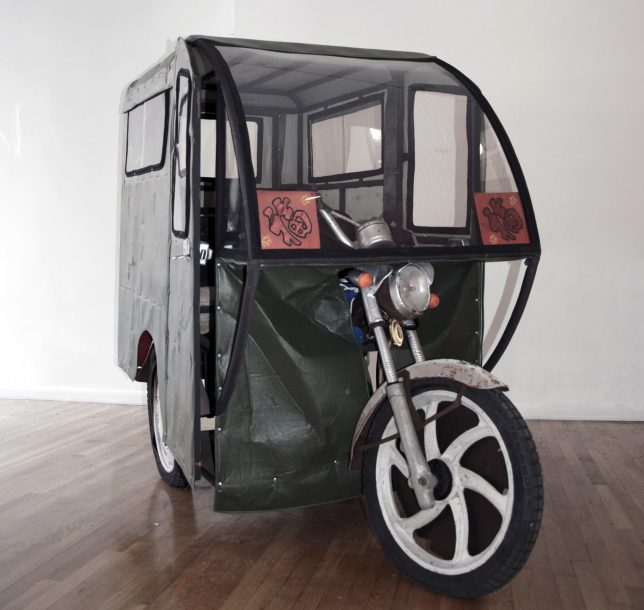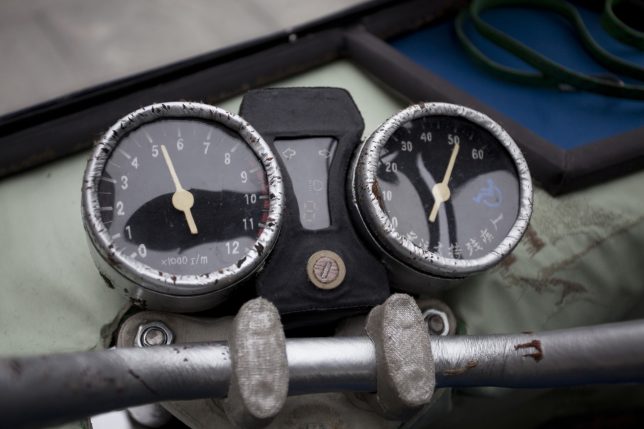Woven into this remarkable works of fabric sculpture are incredible details, from metallic sheen and scratches on a recreated pay phone to grime and fish skeletons on dirty dishes (complete with fabric “water” pouring into the sink).
Working out of Beijing, China, Mongolian artist Gao Rong sews scenes from her own history, drawing on time spent in past apartments, family homes and familiar streets. At the same time, the objects she chooses are easy for anyone to relate to.
Her “meticulously crafted and embroidered pay phone,” for instance, “replicates the chips and scratches of a once-shiny public” utility, preserving the memory of a modern relic. Structurally, the work employs wood, metal, sponge and foam as shaping materials, all covered in detail-driven cloth.
In her own way, Rong is preserving a family tradition, adapting a legacy practice to create a new kind of art. In her more elaborate settings, it can be hard to tell that embroidery is the visible expression, but once realized, that lends a kind of ambiguous softness to nostalgic scenes.
More about the artist: “Gao Rong takes the ordinary and makes it extraordinary. In banal moments of the everyday – waiting at a bus stop, making a call from a public phone, collecting the mail, catching a cab – she sees a deeper significance. She re-creates quotidian things from her student days and from her life today as an artist in Beijing, documenting her existence in a dramatically fast-changing city. With her hyper-real embroidered sculptures she is recording the memories of a 1980s generation and their experiences of a transforming post-Mao China.”
Her projects intentionally question tradition: “Think of Chinese embroidery and you tend to imagine dragons, phoenixes, and blossoms applied with tiny, delicate stitches – a feminine craft from the imperial past. Gao Rong subverts this notion of decorative ‘women’s work,’ creating large-scale 3D works in stitched fabric wrapped around an armature of sponge, steel frames and wire.”
“Exact representations of peeling paint, moldy shower rooms, electrical fuse boxes, public telephones and bus timetables replace the traditional motifs. Embroidery has become her visual language … it appears astonishingly real. On closer inspection you see that every single detail is embroidered fabric … evocative and nostalgic.”
